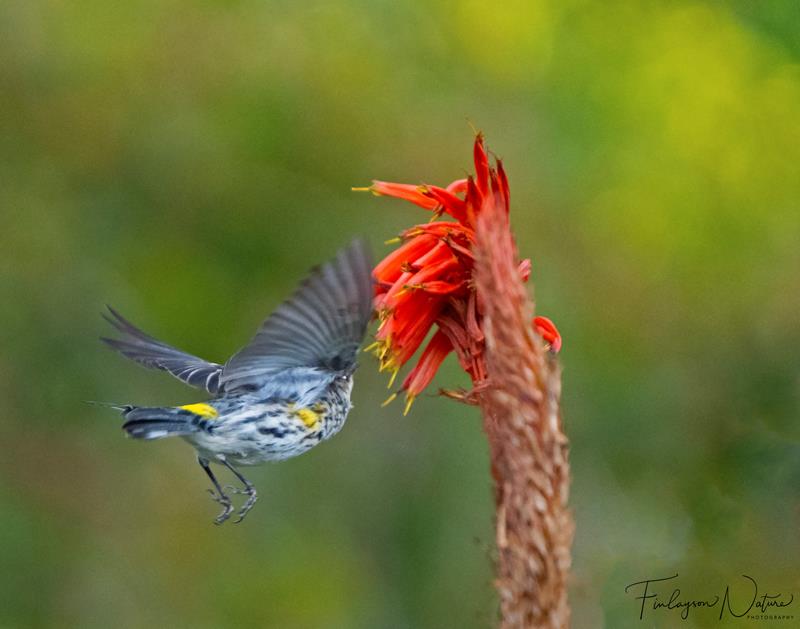Myrtle or Yellow-rumped Warbler
A Myrtle Warbler, Setophaga coronata, also known as a Yellow-rumped Warbler, was reported by Luis Lopez from the Europa Point area, with a video and a photograph posted by Manuel Morales Holgado, on the WhatsApp group 'Aves Estrecho Gibraltar' on February 27th.
The following day Charles Perez, Clive Finlayson and Keith Bensusan went to locate the bird, that from the photos that were posted, was foraging along an Aloe stand at Europa Point. In near gale force winds, the three observers found the bird, after a frustrating five minutes, opposite the Mosque, on a large Aloe arborescens stand, which had a few flowering spikes left, after the flowering period in December. It was calling, that made locating the bird much easier when it disappeared from sight. Several photos were taken by Clive Finlayson, in the poor light and cloudy and windy conditions, that made holding the camera steady very difficult. On subsequent visits the warbler acquired the pink nasal and chin feathers from the Aloe pollen seen on the heading photo, thereby confirming that the bird was a new arrival to the site, as previous photos show clean feathering.

Myrtle Warbler C. Finlayson

Myrtle Warbler C. Finlayson

Myrtle Warbler C. Finlayson

Myrtle Warbler C. Finlayson
Yellow-rumped Warbler is a North American species that the International IOC World Bird List v. 10.2 classifies into three main species. The Myrtle Warbler, S. coronata (the one found in Gibraltar), with a range along eastern and northern America, the Audubon's Warbler S. aududoni , found along western America, and Goldman's Warbler S. goldmani, in eastern Chiapas and western Guatemala. The American warblers breed in North America, and winter in southern USA, Central America the West Indies, where it inhabits, forest, woodlands and edges.
The Myrtle Warbler migrates from September to early November from its breeding grounds along the eastern sector of Canada and the USA down to its wintering grounds in eastern parts of the southern USA, and the Caribbean. Some migratory birds get caught up in storms, and Atlantic depressions, and get wind-blown to Europe. Some lost birds may land on ships bound to Europe and are classified as ship-assisted vagrants. The Myrtle Warbler is likely to have been one of these and found its way to Europe, where it proceeded to migrate south and ended up in Gibraltar. This is the first record of the species in Gibraltar, but not the only American vagrant. There have been several other American vagrants found on our shores that include Tropical Mockingbird Mimus gilvus, Dark-eyed Junco Junco hyemalis, White-throated Sparrow Zonotrichia albicollis, Bobolink Dolichonyx oryzivorus, Boat-tailed Grackle Quiscalus major, and Indigo Bunting Passer cyanea.
The Myrtle Warbler has also been recorded from the UK where it was first found in Devon on January 5th 1955. Since then there have been 26 records of the species until 2020. they have also been recorded from the Azores 20, Iceland 19, Ireland 18, and single records for the Netherlands and Norway.